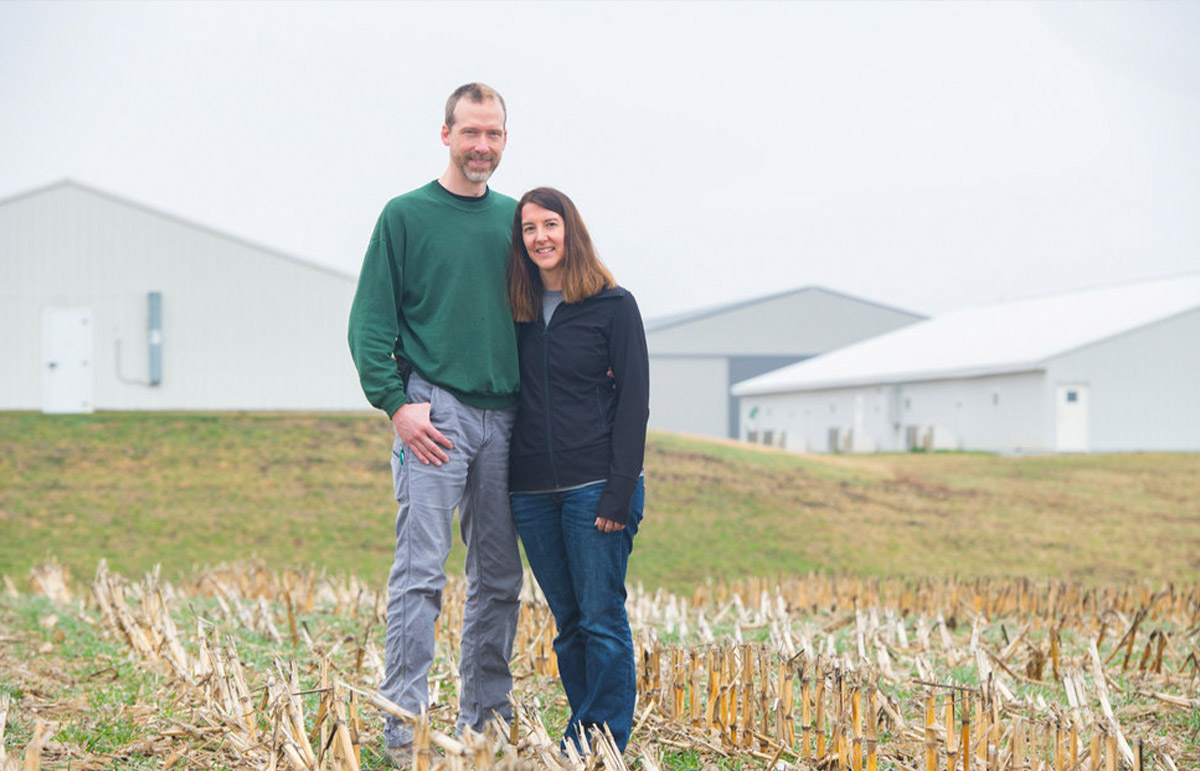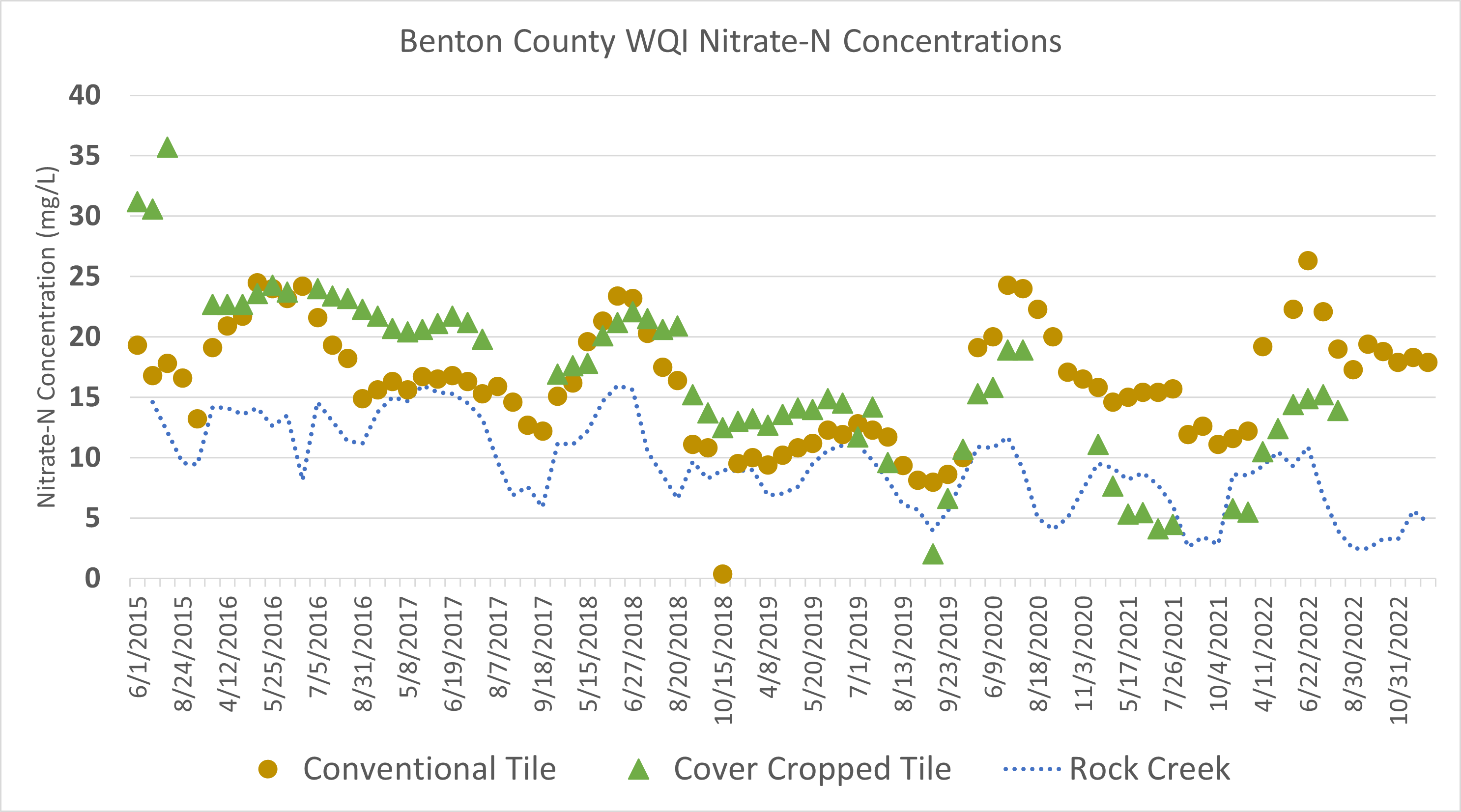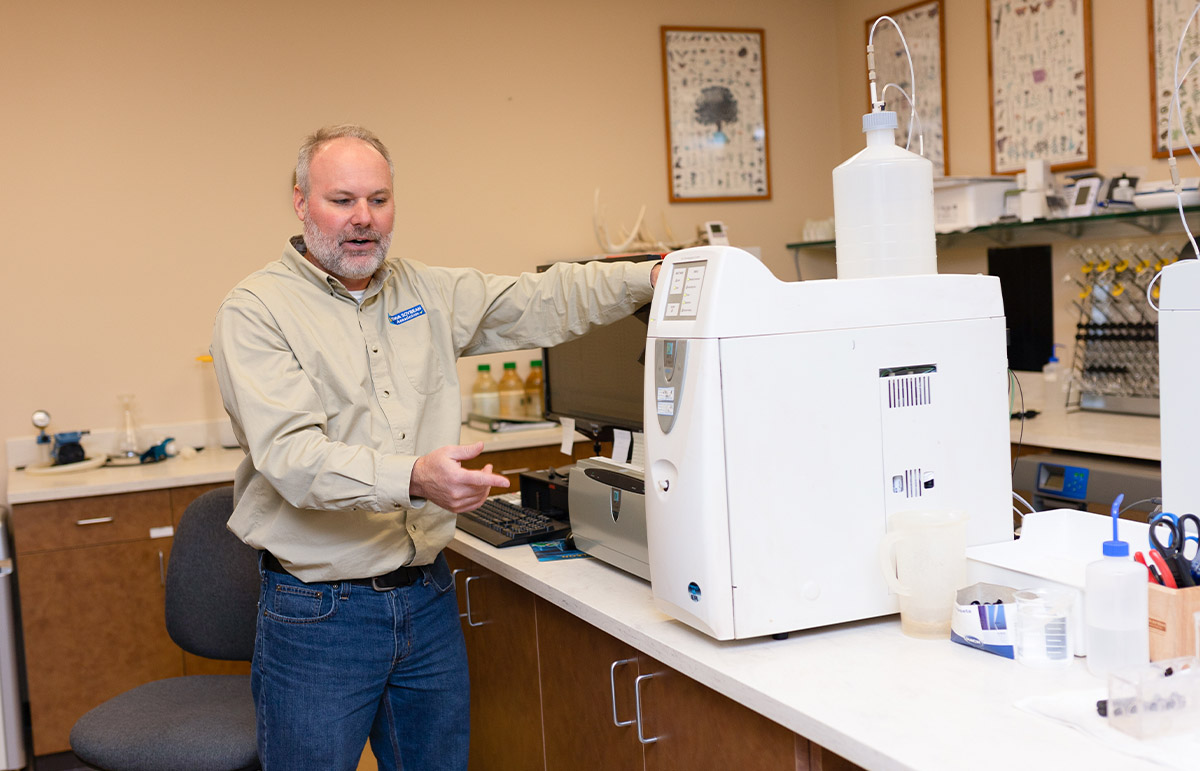
Mike and his wife Amy are sixth-generation farmers who grow soybeans and corn along with a farrow-to-finish pig operation. (Photo: Iowa Soybean Association)
Monitoring tile water for water quality
May 5, 2023 | Kriss Nelson
Mike Paustian is on the road to improvement. That’s why the Iowa Soybean Association (ISA) farmer member in Scott County engages with ISA’s Research Center for Farming Innovation (RCFI) to learn more about how he can continue to improve water quality in his area.
Water quality monitoring is a key program through ISA’s RCFI. The center works with sponsors supporting monitoring across Iowa, including Agriculture’s Clean Water Alliance, Soil and Water Conservation Districts, Watershed Management Authorities, and several cities.
Monitoring connects and complements conservation implementation projects and programs where sponsors are providing financial and technical assistance to farmers as they work to protect and improve their soil and water.
The accredited lab is certified by the U.S. Environmental Protection Agency (EPA) through the Iowa Department of Natural Resources to analyze E. coli bacteria, nitrites and fluoride under the Safe Drinking Water Act.
Analyzing results
The accredited water lab supplied individual water monitoring reports for 158 participants in 2022, including samples on 247 tiles and 63 edge-of-field nutrient reduction practice sites, which include saturated buffers, bioreactors, ponds and wetlands.
Results showed a statewide average tile nitrate-N concentration of 14.5 mg/L, the highest since 2016 and above the seven-year average of 12.6 mg/L.

The Des Moines Lobe, Iowan Surface and Southern Iowa Drift Plain, the state’s three prominent landforms, were also above their seven-year average, with both the Des Moines Lobe and Iowan Surface having average nitrate-N concentrations of 15.7 mg/L.
Tony Seeman, ISA water lab service manager, notes that when drier growing seasons occur, plants might not access nitrogen in the soil, allowing it to accumulate and be lost the following spring. When early season rain arrives, higher levels of nitrates can be leached below the root zone and lost out of tiles, causing increased levels in streams and rivers.
Other results showed no significant difference between corn or soybeans in the rotation, and cover crop fields averaged 26% less nitrate loss than those without cover crops.
“When the soils thaw, and we get spring rains, cover crops use those nitrates instead of letting them leach deeper into the soil and eventually lost downstream,” Seeman says.
Besides management categories, reports also anonymously rank individual site results compared to others throughout the state by landform, county and project.
“ISA is doing a tremendous job at compiling data and giving us reports,” says Paustian, who raises soybeans, cattle, and hogs near Walcott. “This is a real value for me. I see my results for my fields. It provides a lot of context on how that compares with others in the area and state. Am I average? Above or below average? What more can I do?”

Evaluating management
Water monitoring can help gain an in-field management evaluation.
“If there are exceptionally high levels of nitrates coming off your field, there is an opportunity to change your fertilizer regime,” says Seeman.
Following the 4Rs of nutrient stewardship – the right source, right rate, right time and right place should be a priority.
“Fertilizer is where your dollars are. More than 75% of the sites we have sampled fall into expected ranges, so then farmers can think about adding an edge-of-field practice or cover crops to make further reductions,” says Seeman.
Recognized as one of our state’s conservation champions, Paustian, a member of the Front 40 class, is a big proponent of water monitoring that helps him make those data-based decisions for his farm.
“You cannot look at tile water and see if it is full of nutrients,” Paustian says. “Testing the water draining out of our fields is a great starting point for understanding what is happening.”
Based on previous water quality results, Paustian has incorporated saturated buffers, no-till and cover crops.
Water monitoring could also play a significant role in helping achieve goals set by the Iowa Nutrient Reduction Strategy.
“We need a 45% reduction of nitrates from every acre in Iowa,” Seeman says. “Data is needed to help farmers gauge the next steps in achieving the 45% reduction per acre.”
Voluntary approach
Paustian has encouraged producers in his area to get involved with water monitoring and to make the conservation shifts necessary to improve water quality.
“The Iowa Nutrient Reduction Strategy has been in place for 10 years. We need to show progress, or it will appear a voluntary conservation approach will not work,” he says. “A voluntary approach is inherently more flexible, and we must show it can work.”
Back